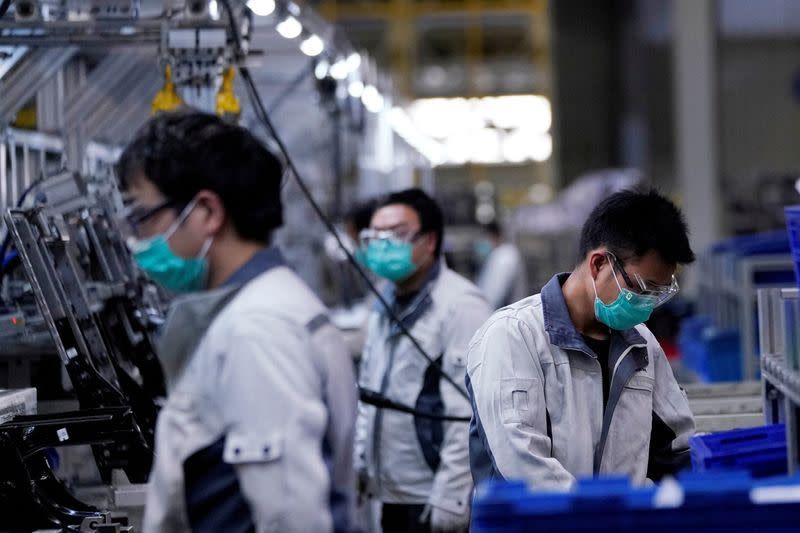In July, China’s factories fell back into slower growth only one month after recovering significantly. This was due to continuing demand weakness as well as local Covid-19 outbreaks, all of which sent the country’s enormous manufacturing sector back into a new phase of worry.
Caixin released the results of a private survey on Monday indicating that manufacturing activity increased at a slower rate in July. This comes on the heels of a negative government survey that was released on Sunday, which indicated that the industry declined during the previous month.
The Caixin/Markit manufacturing purchasing managers’ index (PMI) decreased to 50.4 from 51.7 in June, as shown by the poll. This result was significantly lower than what was expected, which was for a slight dip to 51.5, but it was still above the index mark of 50 points, which divides growth from contraction.
An unexpected drop in the official manufacturing PMI was reported by the National Bureau of Statistics (NBS) on Sunday. The index fell from 50.2 in June to 49.0 in July, indicating a decrease in activity.
China’s industrial centres, notably Shanghai, enjoyed a good comeback in June following extensive Covid lockdowns in the spring. However, the momentum had already showed indications of slowing, amid additional viral flare-ups and declining domestic and global demand, in addition to a protracted property market drop.
According to Julian Evans-Pritchard, senior China economist at Capital Economics, “The surveys suggest that China’s economic recovery slowed in July as the one-off boost from reopening faded.” “The surveys suggest that China’s economic recovery slowed in July as the one-off boost from reopening.” It is in line with our prediction that the level of activity would continue to be below the trend in the coming quarters.
In the Caixin survey, which focused more on smaller enterprises that were export-oriented, a sub-index for production suggested a second monthly growth, although it was notably slower than in June. This was the case despite the fact that the survey was conducted.
The expansion of new orders, both local and international, also slowed down.
The job situation index dropped for the fourth consecutive month and reached its lowest point in 27 months. Companies explained the reduction in workforce by citing the need to reduce costs, slow sales, and the decision to not replace employees who voluntarily left the company.
After years of consistent price increases that compressed profit margins, one positive development is that corporations’ input prices have only marginally increased. However, because of the lacklustre demand, they were forced to lower their selling prices for the third month in a row.
The mounting toll on China’s economy is clear given that the country’s senior officials have signalled that they are prepared to miss the government growth goal of about 5.5 percent for this year and are instead concentrating on getting the best outcomes that are feasible.
Wang anticipated there would be no significant stimulus measures, despite the fact that he emphasised the third quarter would be a vital phase to bring the economy back on track.
“A more realistic approach would be to effectively execute the policies that are already in place.”
